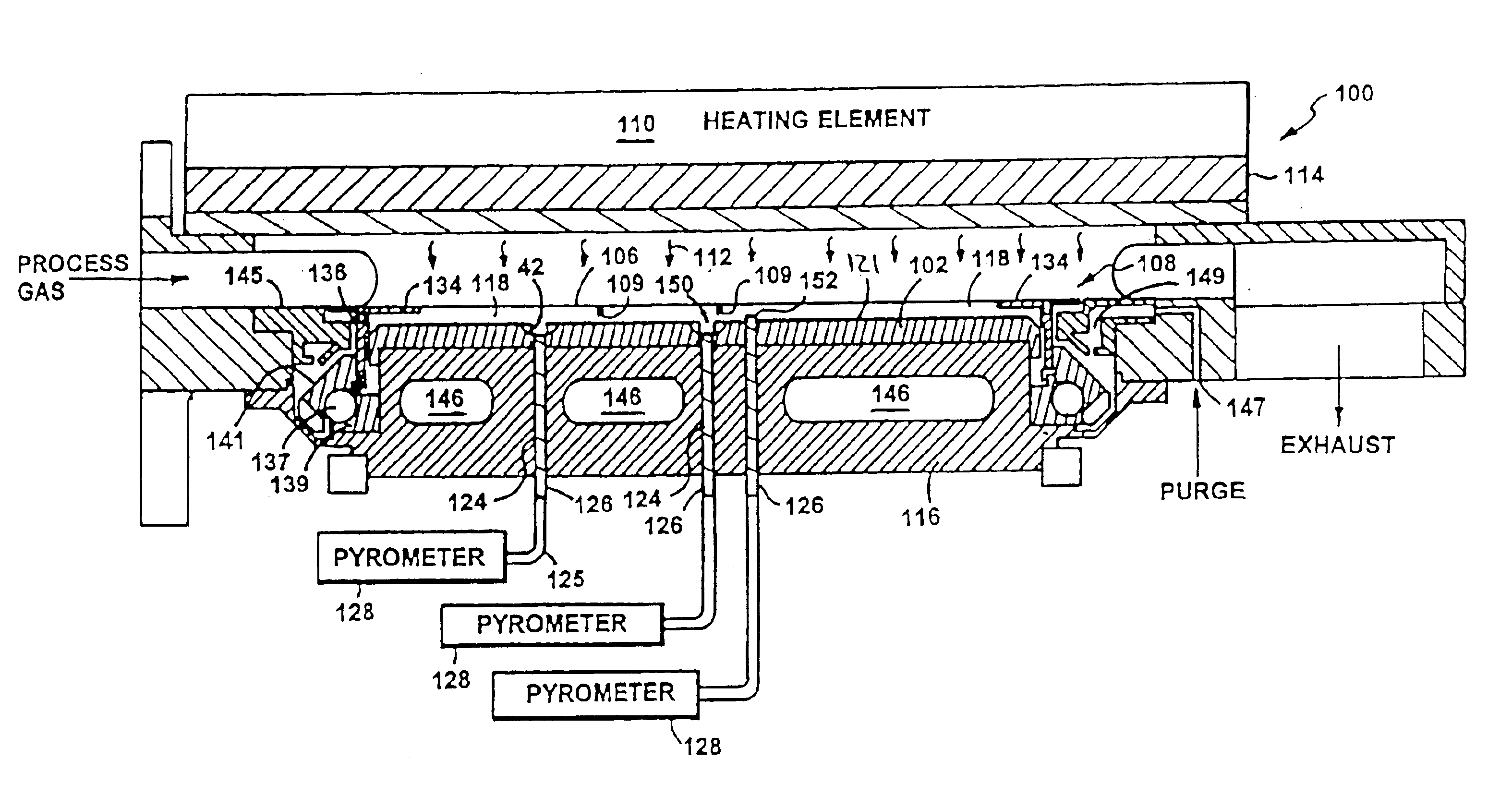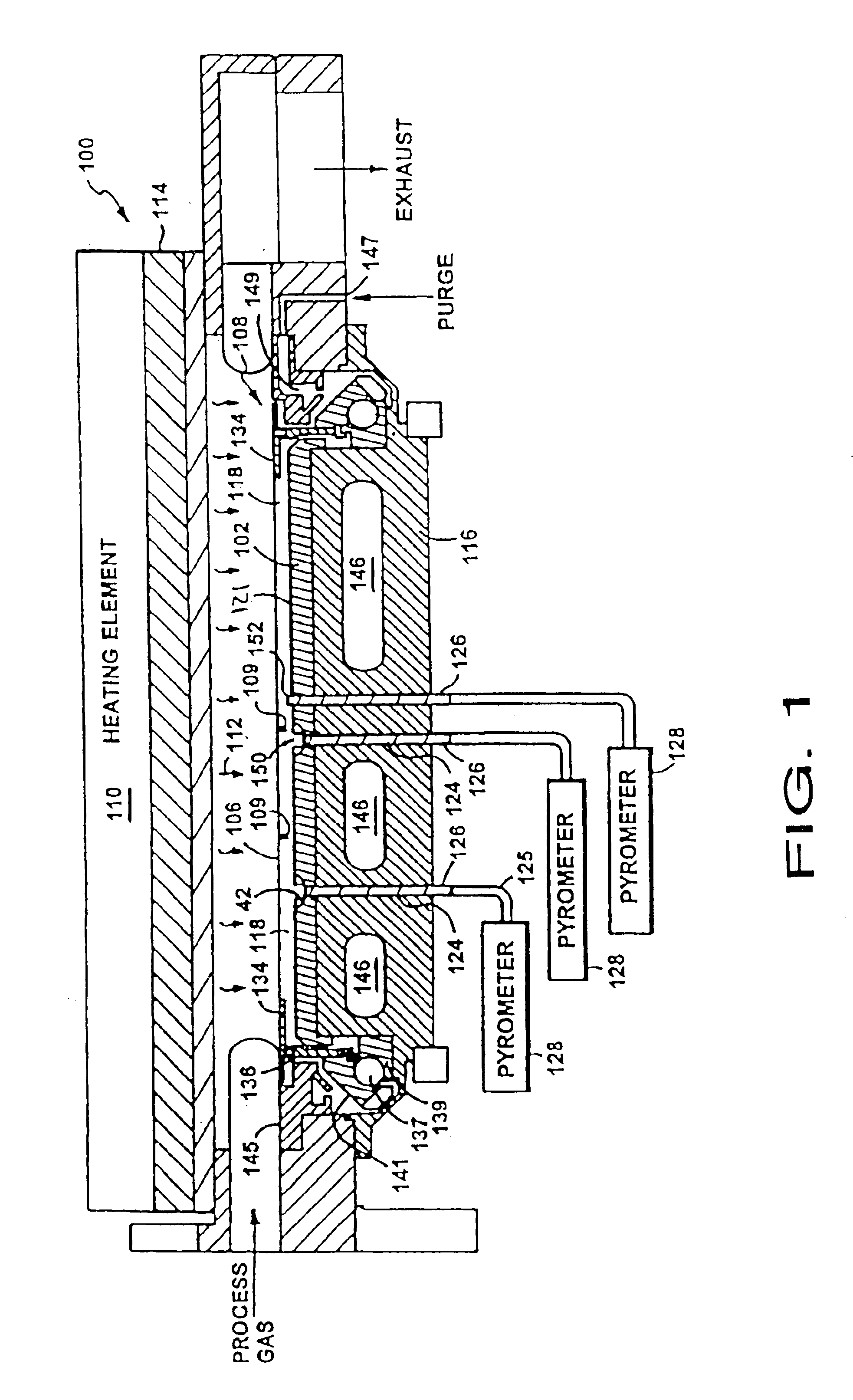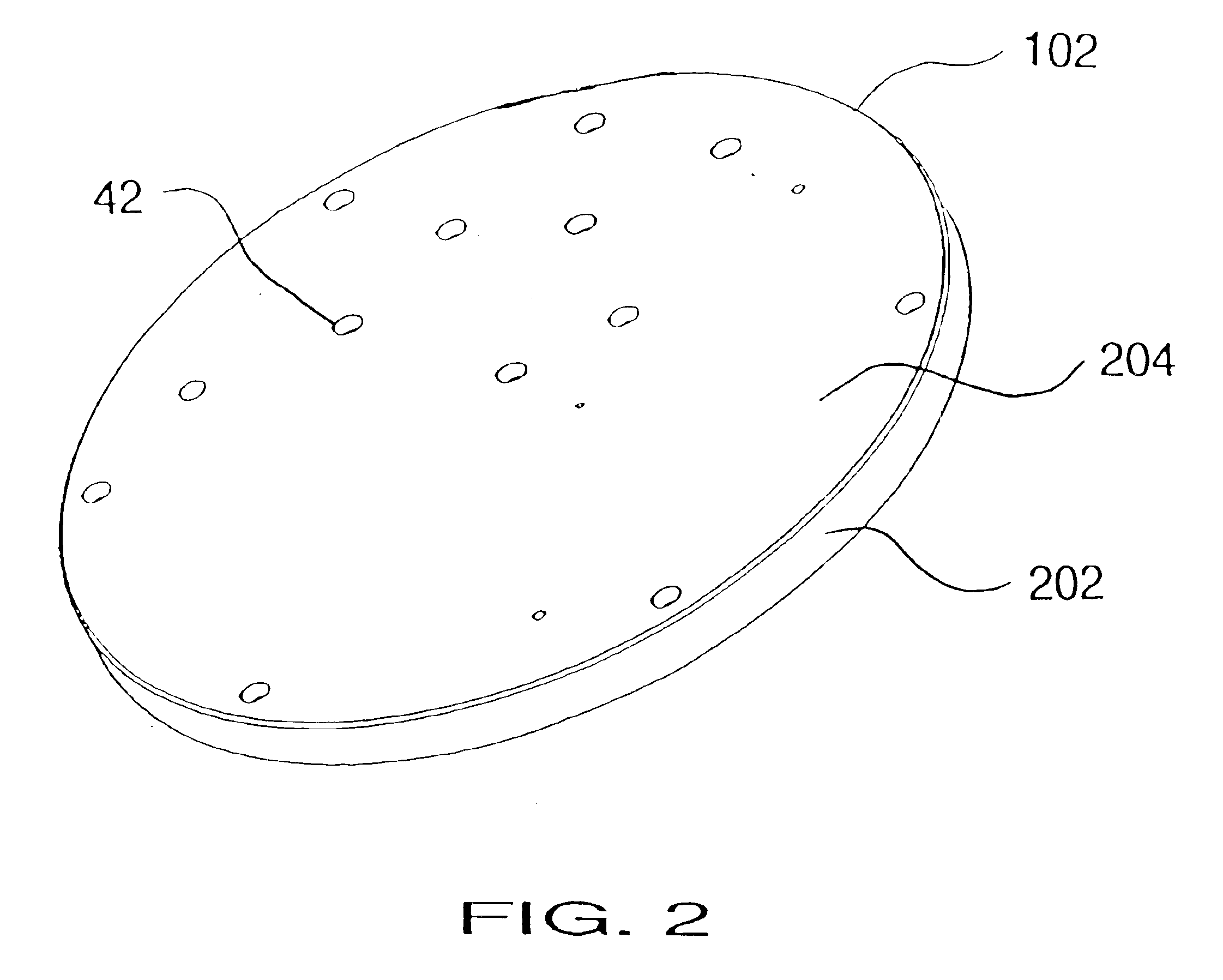Black reflector plate
a technology of reflector plate and black reflector, which is applied in the direction of optical radiation measurement, muffle furnace, furnace, etc., can solve the problems of difficult measurement, inability to measure, and introduce unknown errors into temperature measurement, so as to facilitate cooling of the substrate and improve the accuracy of temperature measuremen
- Summary
- Abstract
- Description
- Claims
- Application Information
AI Technical Summary
Benefits of technology
Problems solved by technology
Method used
Image
Examples
Embodiment Construction
The present invention is generally directed to an RTP system employing a reflector plate which is highly reflective of radiation in a target wavelength range, and less reflective of radiation outside that target wavelength range. In one embodiment, the reflector plate has a highly reflective portion overlying a less reflective portion, wherein the highly reflective portion is highly reflective of radiation in the target wavelength range. As radiation emitted by the substrate is received on the reflector, the radiation in the target wavelength range is reflected, thereby facilitating measurement of the substrate temperature by the pyrometer(s), while radiation outside the target wavelength range is absorbed, thereby facilitating cooling of the substrate.
The RTP System
An RTP system in accordance with one embodiment of the present invention is shown in FIG. 1. The RTP system includes a processing chamber 100 for processing a substrate 106. In one embodiment of the present invention, th...
PUM
| Property | Measurement | Unit |
|---|---|---|
| Nanoscale particle size | aaaaa | aaaaa |
| Nanoscale particle size | aaaaa | aaaaa |
| Nanoscale particle size | aaaaa | aaaaa |
Abstract
Description
Claims
Application Information
 Login to View More
Login to View More - R&D
- Intellectual Property
- Life Sciences
- Materials
- Tech Scout
- Unparalleled Data Quality
- Higher Quality Content
- 60% Fewer Hallucinations
Browse by: Latest US Patents, China's latest patents, Technical Efficacy Thesaurus, Application Domain, Technology Topic, Popular Technical Reports.
© 2025 PatSnap. All rights reserved.Legal|Privacy policy|Modern Slavery Act Transparency Statement|Sitemap|About US| Contact US: help@patsnap.com



